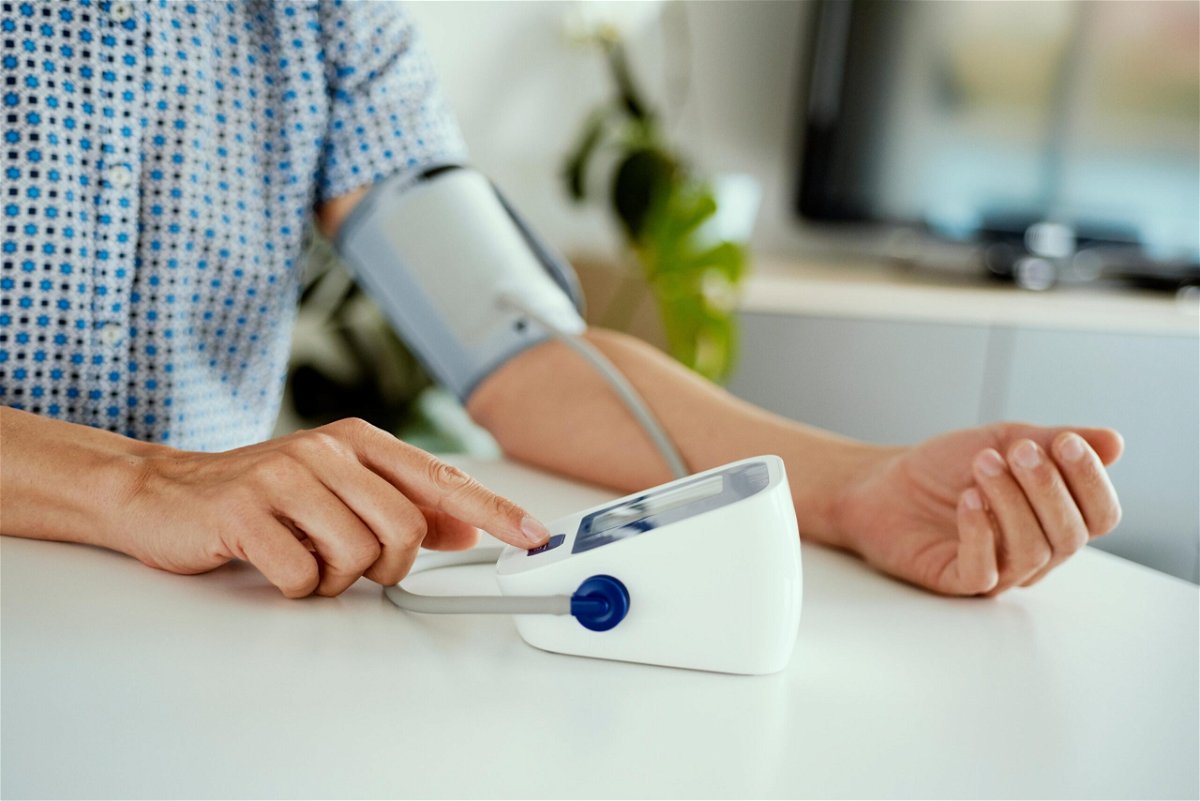High blood pressure went up even more early in the pandemic, study finds

People in the US with high blood pressure saw their levels rise during the first eight months of the Covid-19 pandemic.
By Jen Christensen, CNN
People in the US with high blood pressure saw their levels rise during the first eight months of the Covid-19 pandemic, a new study says.
When someone has high blood pressure, the force of their blood pushes against the walls of their blood vessels, making their heart less efficient. Both vessels and heart must work harder. Without treatment, high blood pressure will eventually damage the arteries, raising the person’s risk of a heart attack or stroke.
Heart disease is the No. 1 killer in the world, and well-controlled blood pressure is the leading modifiable risk factor, according to the researchers on the new study, published Tuesday in the journal Hypertension.
The US National Institutes of Health, which helped fund the study, said it is one of the most extensive looks at blood pressure trends from the beginning of the pandemic.
The researchers looked at the records of more than 137,000 adults with high blood pressure and compared their levels from August 2018 to January 2020 with their levels from April 2020 through January 2021. The records came from Cedars-Sinai Medical Center in Los Angeles, Columbia University Irving Medical Center in New York City and Ochsner Health in New Orleans. The participants, on average, were 66 years old. More than half were women, and 30% were Black.
Blood pressure is measured in millimeters of mercury (abbreviated as mmHg). The measurement has an upper number, or systolic reading, and a lower number, a diastolic reading.
Systolic pressure measures the force of blood as it pumps out of the heart into the arteries, and diastolic is the pressure created as the heart rests between beats. High blood pressure is defined as a systolic pressure over 140mmHg and a diastolic blood pressure over 90 mmHg.
In the study, the patients’ systolic readings rose 1.79 mmHg, on average, and their diastolic readings went up an average of 1.30 mmHg.
“Although these increases appear small, studies show that just a 2 mmHg increase in blood pressure can raise the risk of major cardiovascular events by as much as 5%,” the NIH said in a news release.
The overall rise in numbers was “smaller than expected,” said study author Dr. Hiroshi Gotanda, an assistant professor in the division of General Internal Medicine at Cedars-Sinai Medical Center.
Gotanda thinks the expansion of telemedicine during the pandemic may have helped. Other studies have found that telemedicine is an effective alternative to an in-person doctor visit to manage high blood pressure.
Because high blood pressure doesn’t always cause symptoms, people who have it are encouraged to monitor their numbers at home. If they have a doctor’s appointment, they may be more mindful about keeping track so they have something to report. And during an appointment, doctors can change their prescription if their blood pressure is consistently high.
In the first three months of the pandemic, the study found, people weren’t checking their blood pressure at home as much as they had been. Measurements declined as much as 90% from before the pandemic. The number of checks went up over time, but even at the end of the study period, the measurements were still below pre-pandemic levels.
The study had some limitations, including that it measured only people who were able to access health care. Those without health care or insurance may have had a different result.
“The impact of the pandemic on their blood pressure might have been much larger,” Gotanda said.
The study doesn’t suggest why blood pressure levels went up, and it’s hard to tell on an individual basis, Gotanda said. But it may involve pandemic-related changes in routines.
Dr. Eduardo Sanchez, the American Heart Association’s chief medical officer for prevention, offered some other reasons: “Clinical care visits declined dramatically in the early months of the pandemic — delayed care seeking by patients and reduced access by some clinical care providers. Patient behavior was driven by their interpretation of COVID prevention messages and fear of COVID. Early on, job loss may have contributed to less care and not filling prescriptions. Visits have been increasing and blood pressure control is increasing but lagging.”
Additionally, studies show that people have gotten less sleep — and less quality sleep — during the pandemic. With gyms closed and people staying home more, they exercised less, had less-healthy diets and drank more alcohol.
Gotanda said the researchers hope to look next at what impact even this slight blood pressure increase will have on a patient’s overall heath. They also want to know which of the patients may have had a hard time accessing telemedicine.
Telemedicine could have a broad impact. Nearly half of adults in the United States have high blood pressure, according to the US Centers for Disease Control and Prevention, and about half of those have what doctors consider uncontrolled high blood pressure. That’s about 37 million adults — and with the ongoing obesity epidemic, the number will probably grow.
High blood pressure can be genetic, but there are things you can do to keep it in check. Keeping a close eye on your numbers is the first step, the American Heart Association recommends. People who know their numbers can make changes if they need.
Medication can treat high blood pressure, and lifestyle changes could help, like stopping smoking or vaping, managing stress, keeping a healthy weight and eating a heart-healthy diet.
A heart-healthy diet is high in vegetables, whole grains and low-fat dairy, and low in salt, saturated fat, red meat and sweets. It’s also one that keeps alcohol to a minimum. The American Heart Association suggests no more than two drinks per day for men, one for women.
The-CNN-Wire
™ & © 2022 Cable News Network, Inc., a Warner Bros. Discovery Company. All rights reserved.